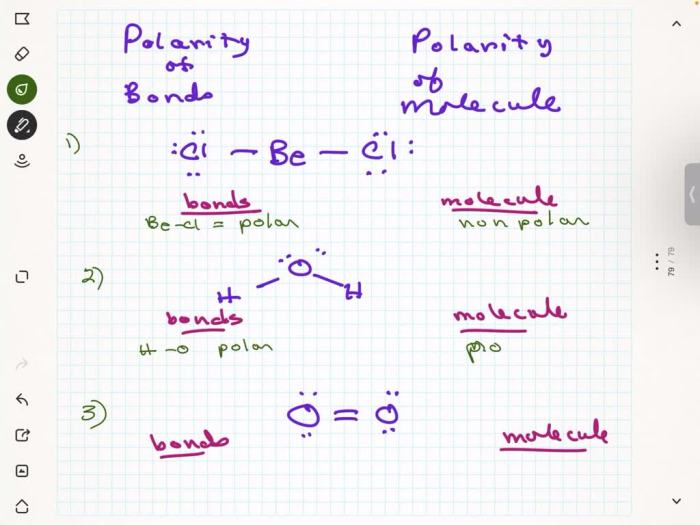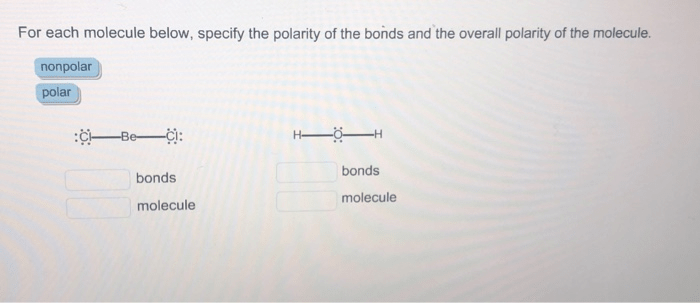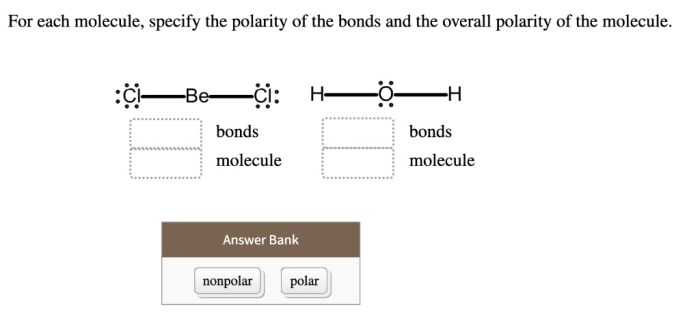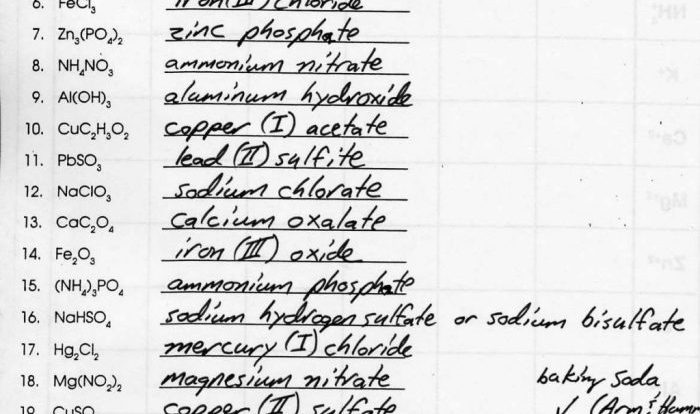For each molecule specify the polarity of the bonds – In the realm of chemistry, understanding the polarity of bonds is paramount. Bond polarity, a crucial concept, determines the distribution of electrons within a molecule, shaping its properties and influencing its interactions with other molecules.
This comprehensive guide delves into the significance of bond polarity, exploring methods for its determination, examining examples of polar and nonpolar bonds, and unraveling its consequences and applications in various scientific disciplines.
1. Introduction

Molecular polarity is a fundamental concept in chemistry that describes the uneven distribution of electrons within a molecule. Understanding bond polarity is crucial as it influences various molecular properties and plays a vital role in determining intermolecular interactions.
Bond polarity arises due to differences in electronegativity between the atoms involved in a chemical bond. Electronegativity measures an atom’s ability to attract electrons towards itself. When two atoms with different electronegativities bond, the more electronegative atom attracts the shared electrons more strongly, resulting in a polar bond.
2. Methods for Determining Bond Polarity

Determining bond polarity involves assessing the electronegativity difference between the bonded atoms. Several methods can be employed to estimate electronegativity:
- Pauling Electronegativity Scale:This scale assigns numerical values to elements based on their ability to attract electrons.
- Allred-Rochow Electronegativity Scale:This scale considers both the ionization energy and electron affinity of atoms.
- Mulliken Electronegativity Scale:This scale uses the average of ionization energy and electron affinity to calculate electronegativity.
3. Examples of Polar and Nonpolar Bonds

| Molecule | Bond | Polarity |
|---|---|---|
| Hydrogen chloride (HCl) | H-Cl | Polar |
| Sodium chloride (NaCl) | Na-Cl | Ionic (Highly Polar) |
| Carbon dioxide (CO2) | C=O | Polar |
| Methane (CH4) | C-H | Nonpolar |
| Water (H2O) | O-H | Polar |
4. Consequences of Bond Polarity

Bond polarity significantly influences molecular properties:
- Molecular Shape:Polar bonds create regions of positive and negative charge within a molecule, affecting its overall shape.
- Intermolecular Forces:Polar molecules can interact through dipole-dipole interactions, which are stronger than van der Waals forces.
- Solubility:Polar molecules are generally more soluble in polar solvents, while nonpolar molecules are more soluble in nonpolar solvents.
5. Applications of Bond Polarity: For Each Molecule Specify The Polarity Of The Bonds
Understanding bond polarity has wide-ranging applications:
- Chemistry:Predicting chemical reactivity, designing new materials, and understanding molecular interactions.
- Biology:Explaining the behavior of biological molecules, such as proteins and nucleic acids, in aqueous environments.
- Materials Science:Developing new materials with tailored properties, such as semiconductors and superconductors.
Quick FAQs
What is bond polarity?
Bond polarity refers to the uneven distribution of electrons in a covalent bond, resulting in a partial positive charge on one atom and a partial negative charge on the other.
How is bond polarity determined?
Bond polarity can be determined using various methods, including electronegativity difference, dipole moment measurements, and quantum chemical calculations.
What are the consequences of bond polarity?
Bond polarity influences molecular properties such as solubility, boiling point, and reactivity. It also affects intermolecular forces, such as hydrogen bonding and dipole-dipole interactions.
